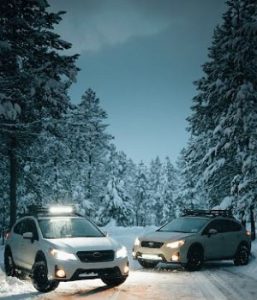EVs During Winter Season
Is it advisable to use electric cars, EVs, in winter?
Electric cars, EVs, are powered by an electric motor instead of a gasoline engine. This makes them much more efficient and environmentally friendly. Electric motors use electricity stored in batteries to power the car, meaning that you don’t have to buy fuel or pollute the air with harmful emissions from burning fossil fuels like petrol or diesel. Additionally, electric cars tend to be quieter than traditional vehicles, since they don’t rely on noisy engines for propulsion.
Another benefit of electric cars is their cost-effectiveness. Although electric cars do require an upfront investment, most drivers find that their monthly expenses are lower compared to those of gas-powered vehicles due to the savings on fuel costs. Furthermore, many governments offer tax credits and other incentives to encourage people to purchase electric cars.
While electric cars have many advantages, there are some drawbacks that should be considered before making the switch. Electric cars typically have a much shorter range than traditional vehicles, meaning they need to be recharged more often. Additionally, they can take longer to charge and require special charging stations in order to work properly. Finally, electric car batteries tend to degrade over time, reducing their performance and ultimately needing to be replaced.
Electric cars are becoming increasingly popular due to their environmental and financial benefits. Although there are some downsides such as limited range and higher upfront costs, most drivers find that the long-term savings make them worth considering. Ultimately, it’s up to you whether or not an electric car is right for you.
Electric Cars and Cold Winter Weather
The electric cars are less effective in the colder time of year. The chilly climate influences battery execution, decreasing reach and constraining you to charge on a more regular basis. Be that as it may, with EVs representing 14.5 percent of new vehicle enrollments, what kind of mileage could disappear? Also, could you at any point actually drive an EVs in freezing temperatures?

The short response to the subsequent inquiry, obviously, is yes. For a really long time (because of solid motivators) Norway’s electric cars take-up far outperformed that of some other worldwide market – notwithstanding its outrageous winters. The UK, conversely, has a generally gentle environment, so driving an EVs all year here ought to be simple.
A few firms, for example, Renault, offer web-based mini-computers that let you resolve what sort of reach you can expect when temperatures decrease. For instance, in the event that you’re running a Zoe in ordinary circumstances (20 degrees celsius, at a consistent 31mph), Renault figures you’ll get 234 miles on a full charge.
Assuming that the temperature were to drop to only five degrees and you went around wherever with the warmer on, that figure could overturn to 187 miles as per Renault’s aggregates – a 20 percent decrease in range. It’s more regrettable still when things fall underneath freezing; at short five degrees a Zoe R135 will return only 152 miles prior to waiting be connected. Taking note of that the greater the battery, the more prominent potential for energy loss is significant.
For what reason does chilly climate decrease EVs proficiency?
Cold temperatures antagonistically influence EVs batteries since they depend on synthetic responses to store and delivery power. Lithium-particle batteries – the most widely recognized cells utilized in electric and crossover vehicles – work when lithium particles move from the anode to the cathode; cold dials this cycle back and limits battery execution. The outcome can be a sensational misfortune in usable reach.
However for some drivers, even 152 miles will be bounty. In the event that you have a short drive and can energize at work or at home, you might exploit pre-molding – warming your vehicle’s lodge, thawing out the windows and turning on the warmed seats – before you leave in the first part of the day.
This won’t just keep you and your travelers decent and hot, it can likewise assist with molding the battery to restrict energy misfortune; the hotter the battery, the almost certain it is to perform at its ideal. Vehicles fitted with helper heat siphons frequently perform better in winter consequently; on the off chance that you live in a space especially impacted by the cool, we’d genuinely consider determining an intensity siphon as a discretionary extra.
Do low temperatures influence charging speeds?
While there are no additional risks while charging your electric cars in downpour or snow, one more unfavorable impact of the virus is that charging speeds from public quick chargers might be more slow. Tesla concedes that super weather conditions can bring about diminished charging speeds at its Supercharger stations, and the equivalent is probably going to be valid for different organizations
However, aside from watching out for your model’s anticipated reach, the climate and winning street conditions, there is very little for you to stress over while driving an electric cars throughout the cold weather months.
Valid, electric cars are for the most part heavier than their comparable petroleum and diesel models – slides might be more diligently to control – however good judgment directs that we ought to all drive all the more cautiously exposed or wet, whether or not we’re in an electric cars or not. Any dealing with drawbacks can, obviously, be moderated fairly by putting resources into a decent arrangement of winter tires, which is similarly as significant for an EVs for what it’s worth for a petroleum vehicle.
Benefits
Numerous electric cars have dynamic warm administration – permitting them to be pre-warmed prior to driving. Not exclusively will the windows be without ice for better perceivability (and subsequently more prominent wellbeing), you can do this while the vehicle is connected so you don’t need to deplete its battery while it pre-warms. Warming capabilities can normally be constrained by an application on your cell phone so you can enact the cycle from inside your home or to begin at a specific time.
Dissimilar to a petroleum or diesel vehicle, there is no time expected to warm a motor for the radiator to become successful for thawing out to occur. This implies the vehicle isn’t sitting with the motor running and it isn’t contaminating. For security, the vehicle can likewise remain locked.
EVs are designed with the goal that they can be driven tenderly for economy and they are likewise gear-less so it is not difficult to apply the power without a hitch – and this is precisely exact thing’s required when pulling endlessly on snow or ice.
The expansion of batteries for the most part create EVs and cross breeds heavier and in winter this can be favorable for footing when the street is tricky. Some crossovers have traditional drive to the front haggles to the back making them all-wheel-drive when as well, so this can help footing when the streets are elusive.
Detriments
A very remarkable vehicle’s colder time of year capacity comes down to tire decision and EVs are normally fitted with ‘green’ tires – ones with a low moving obstruction and once in a while higher tensions – for lower energy utilization. The other side is that they are less competent in the colder time of year as they’re not so ‘tacky’ as those made with milder mixtures.
Chilly climate influences vehicles’ battery execution and this will cut into its electric reach. The American Vehicle Affiliation recommends an EVs reach might be diminished by up to 40% in freezing climate.
Energy requests, for example, lodge warming, warmed seats and directing wheels, fans to de-fog windows and warmed window components – all pre-owned more in the colder time of year – will affect a vehicle’s reach.
Crossover vehicles may not change to battery use as much in winter because of the energy additional requests and lower battery execution when it’s virus. This implies you won’t benefit as much from the economy of a half and half in winter.
Conclusion
Indeed, you can in any case drive an electric cars through the colder time of year. Make certain to perform ordinary support on your vehicle – check your windscreen washers, radiator fluid and tire pressures at an absolute minimum – and you ought to be fine. Gracious, and recollect: essentially you won’t be left remaining alongside the electric cars in sleeting precipitation for five minutes filling your tank with diesel.
About Stone Age Technologies SIA
Stone Age Technologies SIA is a reliable IT service provider, specializing in the IT Solutions. We offer a full range of services to suit your needs and budget, including IT support, IT consultancy, remote staffing services, web and software development as well as IT outsourcing. Our team of highly trained professionals assist businesses in delivering the best in IT Solutions. Contact us for your IT needs. We are at your service 24/7.









Write a Comment